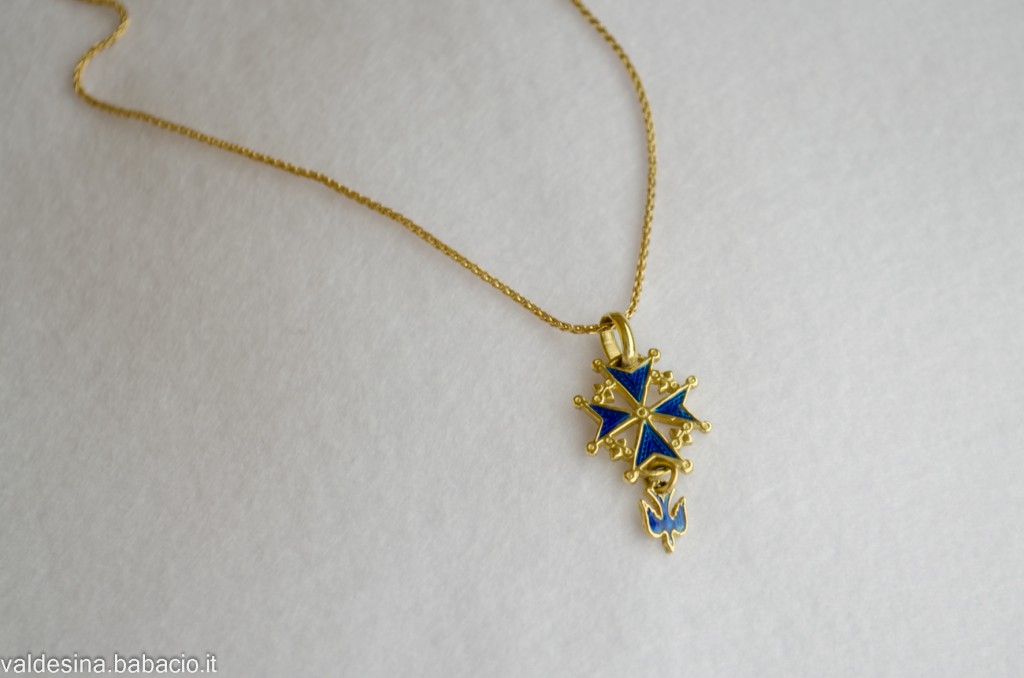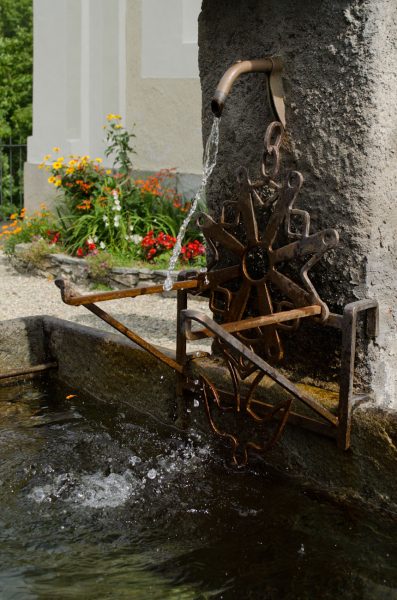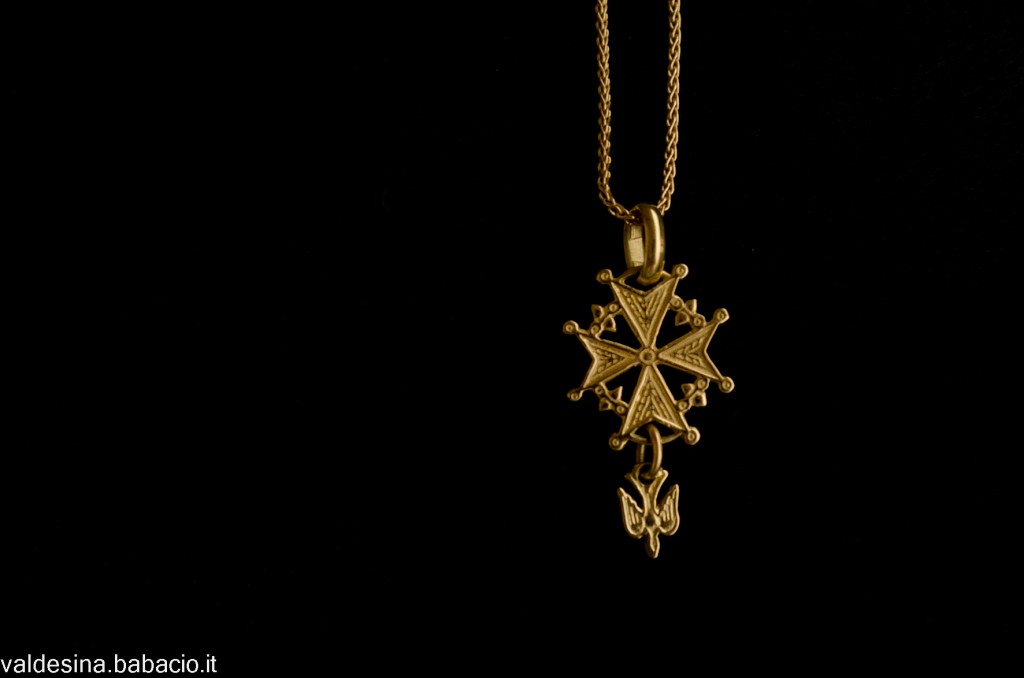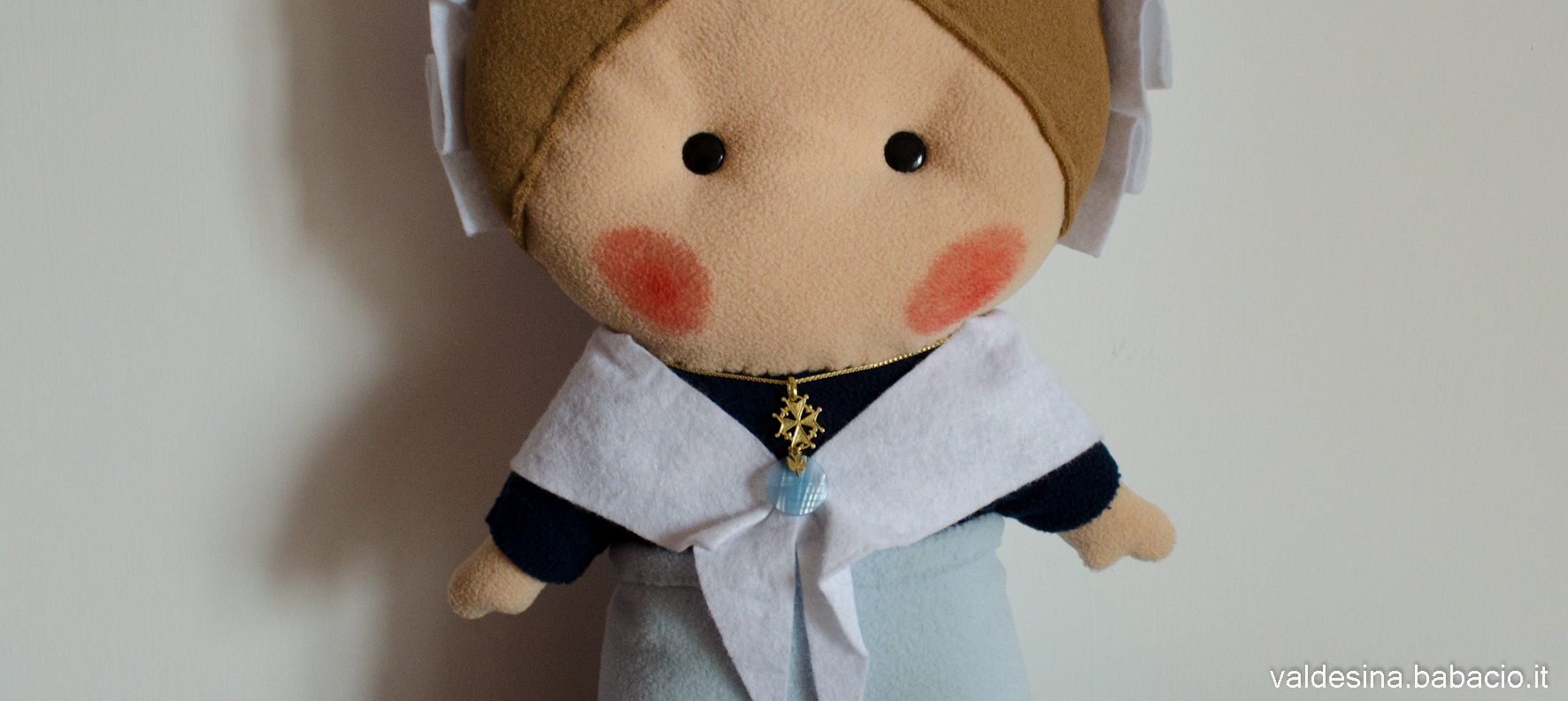Hello!
I really hope you liked the previous story about the Waldensian costume, ’cause today I want to tell you something about another important element of Waldensian tradition and clothes; you may have noticed that many people wear a characteristic pendant, called “Huguenot cross”. What is it? It takes its name from the French Protestants, who were persecuted as heretics and called “Huguenots”.

Huguenots rejected the Latin cross, symbol of the Roman Church, and they chose to use an icon widespread among the population of southern France, which is the Maltese cross (also known as cross of St. John).
In that region, especially in Cévennes area, in great medieval abbeys it was used to distribute this cross to pilgrims, and in a very short time that cross became very popular.
The Huguenot cross is a bit different from the Maltese cross: the most noticeable difference is represented by the lilies placed between the arms of the cross: the tripartite lily, as well as being a symbol of purity, also represents the Trinity and is the emblem of France. The lilies form a circle that resembles the crown of thorns and, if you look closely, you can also see some heart-shaped holes, symbol of love for Christ.
Finally, a dove with outstretched wings (representing the Holy Spirit ) is hanging on the cross; somewhen, during persecutions, the dove was replaced by a pearl symbolizing a tear.
In 1685 Huguenots had to leave France because of religious persecutions, and they took refuge in Waldensian valleys, carrying with them their cross which was later adopted by Waldenses as a sign of solidarity. Even today it is popular as a symbol of Protestants (and not only of Waldenses) and as an assertion of identity.

According to others, the Huguenot cross was designed and produced by a goldsmith from Nimes, named Maystre, in 1688. It seems that he made the jewel inspired by the story of four young Huguenots of the Cévennes arrested on the day of their wedding. They were forced to make a tough choice: rejecting their Protestant faith or dying at the stake, but they would not give up their religion and were therefore sentenced to death.
In order to commemorate this event, the goldsmith Maystre created a medallion similar to the Maltese cross, with arms tied to form a kind of small circle, in memory of the fire that had united the young Huguenots (the Cross of Malta is usually associated with fire and in many countries it is used as a symbol of firemen). The area between the arms was shaped like a heart, to recall the love that joined those youth involved in this painful legend …

But do not be sad!
Many young Waldensian will receive in these days of Baptisms and Communions their Huguenot cross, usually donated by relatives, as a symbol of identity, able to unite people of Protestant faith all over the world.
…and, of course, let me send you from the heart my wishes of Happy Easter!
Do you want to read the tale in Italian ?
